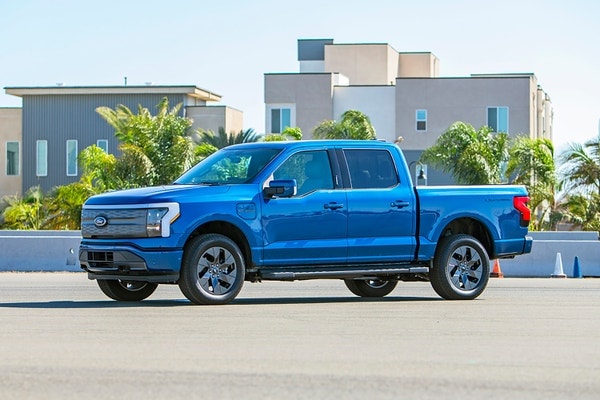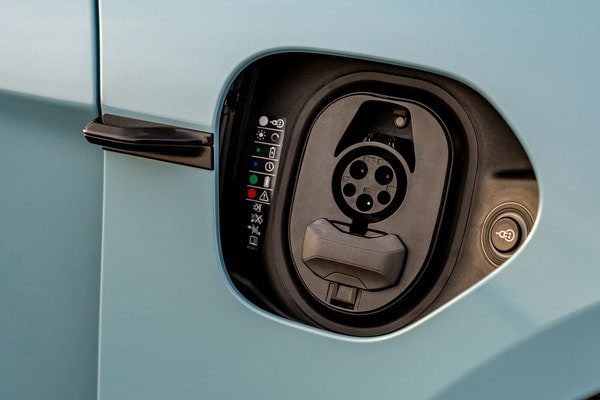2026 Ford Explorer
 View more photos
View more photos2026 Ford Explorer Review
Pros
- Strong engines for quick acceleration
- Secure handling
- Impressive collection of tech and driver assist features
Cons
- Less second- and third-row space than many rival SUVs
- Hands-free BlueCruise tech is an upcharge subscription feature
What's new
- New Explorer Tremor version with enhanced off-road capabilities
- Part of the sixth Explorer generation introduced for 2020
Overview
The long-running Explorer is Ford's midsize three-row SUV that slots between the larger Expedition and the smaller Escape in the brand's SUV lineup. The Explorer's powerful engines and top-notch tech features make it stand out in its class. The 2026 Explorer will also be a little more capable off-road. The new Explorer Tremor version comes with all-terrain tires and a slightly raised ride height to better enable the Explorer to tackle dirt roads and rutted trails. It also has protective underbody skid plates and a limited-slip rear differential that helps the all-wheel-drive system direct the power where it's most needed.
Edmunds spotlight: A tech-forward family SUV
Before the Explorer was refreshed last year, it lagged many rivals in the tech department. But thanks to a host of tech upgrades, that's not the case anymore. To start, all models come standard with a 12.3-inch digital instrument panel and a sizable 13.2-inch touchscreen. The touchscreen displays a new Android-based infotainment system that includes wireless connectivity for Android Auto and Apple CarPlay and uses Google Maps for navigation. BlueCruise is available on all but the base Active trim level, with subscription trial periods varying based on the trim you buy. The Explorer also comes standard with a large package of advanced driver aids and offers a surround-view camera system and an upgraded B&O audio system.
Competitors to consider
The refreshed Explorer has a lot going for it, but it's up against stiff competition. The Kia Telluride and Hyundai Palisade have been two of our favorites since they launched in 2020. We know the Palisade is getting a full redesign for 2026, and we won't be surprised if the Telluride gets one too. The Toyota Grand Highlander is another of the Explorer's top rivals and boasts a larger third row and offers two hybrid engines. If you like the Explorer's strong acceleration and balanced handling, then consider the compelling Mazda CX-90. It not only shares those qualities, but it also offers a more premium look and feel.
Edmunds Expert Rating
Performance
The Explorer is surprisingly agile when driving around corners. Turn-in is quick, and this Ford SUV feels sporty and stable. For daily driving, the Explorer is pretty smooth, but the engine's auto stop-start system is a constant annoyance at stoplights because it takes too long to restart the engine when you lift off the brake pedal. You can disable the feature, but it defaults to being on every time you get in to drive, which is annoying.
Comfort
But if you're sitting in the second or third row, the experience is less pleasant. The captain's chairs, even in the ST, lack bolstering so occupants will slide around; they also lack padding and are too narrow for anyone but a child to enjoy. The third row is too close to the floor, so your legs are lifted well off the seat bottom. Beyond that, the seats lack cushioning and the headrests are uncomfortable.
Ride quality varies by trim level. The performance-oriented ST rides more stiffly than most SUVs, and you'll feel more bumps and ruts in the road. The non-ST trims offer a more composed and comfortable ride for all occupants.
Interior
The Explorer's climate controls are mostly located on the touchscreen. They are generally easy to reach and don't take up too much screen real estate. Plus, the system is very responsive as a whole. Outward visibility is decent for a three-row SUV, and the Explorer's available surround-view camera is very helpful for parking thanks to a super sharp picture that takes up nearly the whole screen.
Technology
The Explorer's driver aids work unobtrusively for the most part, and Ford's BlueCruise hands-free driving system is available with a subscription. The latest version works pretty well and allows you to take your hands off the steering wheel on the highway when certain conditions are met.
Storage
Small-item storage is decent. There are plenty of cubbies and bins tucked away in the doors and other areas for front passengers, but not nearly as many for the second- and third-row passengers. Installing car seats in the second row is pretty easy thanks to the big door openings and easily accessible top and bottom LATCH anchors, but the third row's limited space will make it tough to use the area for a child seat.
Fuel Economy
Value
Wildcard
Which Explorer does Edmunds recommend?
The Explorer is so well equipped that you'll probably be fine with the Active trim. But we think you'll be better off paying a little more for the ST-Line. It looks sportier and gets some nice additions such as upgraded upholstery, a B&O sound system and access to the subscription-based BlueCruise hands-free highway driving assist system.




2026 Ford Explorer video
2025 Ford Explorer First Look | Refreshed & Revitalized | Interior, Exterior, Tech & More
NOTE: This video is about the 2025 Ford Explorer, but since the 2026 Ford Explorer is part of the same generation, our earlier analysis still applies.
Related 2026 Ford Explorer info
Similar Vehicles
Research more upcoming vehicles
- 2026 Toyota Tundra News
- 2026 Jeep Grand Cherokee News
- 2026 Mazda CX-5 News
- 2026 Toyota Highlander News
- 2026 Dodge Charger News
Shop used vehicles in your area
Popular new car reviews and ratings
- Mercedes-Benz S-Class 2025
- Toyota 4Runner 2025
- New Jeep Wrangler
- 2025 Toyota RAV4
- 2025 Hyundai Palisade
- 2025 Highlander Hybrid
- 2025 Trax
- 2026 Chevrolet Trax News
- Toyota Highlander 2025
Vehicle rankings by type
- Electric Car Luxury Electric SUVs
- Best Compact Sedan
- Best Economy Vehicle Rankings
- Best Compact Sports Sedan
- Electric Car Awd
- Best Subcompact Vehicle Rankings
- Truck Heavy Duty
- Best Luxury Compact Sedan
Other Ford models to consider
- 2024 Ford F-150
- Ford F-150 Lightning 2025
- 2025 Ford F-450 Super Duty
- New Ford Escape
- Ford F-150 2025
- New Ford F-150
- 2024 Ford F-350 Super Duty
- Ford Mustang Mach-E 2025
- New Ford Bronco
Research other SUVs
- 2024 Land Rover Range Rover Evoque
- New Mercedes-Benz GLS-Class
- Shop Chrysler SUVs
- New Kia Sportage
- Toyota Crown Signia 2025
Other models
- New Cadillac CT4 for Sale in Longwood, FL
- Used Lamborghini Diablo in Maywood, IL 2001
- Used Polestar 3 in Rancho Cucamonga, CA 2025
- Used Mclaren Artura-Spider in Ashburn, VA 2025
- New Subaru Legacy for Sale in Menomonee Falls, WI
- Used Land-Rover LR3 in Kailua Kona, HI 2009
- Used BMW X5-M in Lake In The Hills, IL 2026
- Used Ford E-Transit-Cargo-Van in Kankakee, IL 2025
- Used Dodge Caravan in Lake Worth, FL 2007
- Used Kia Optima-Hybrid in Littleton, CO 2020

